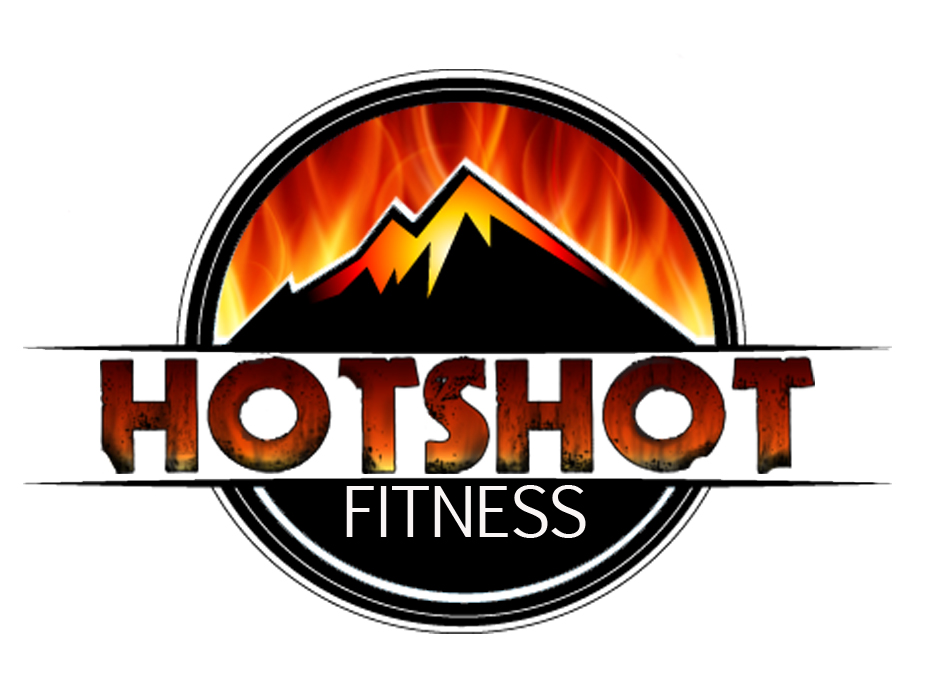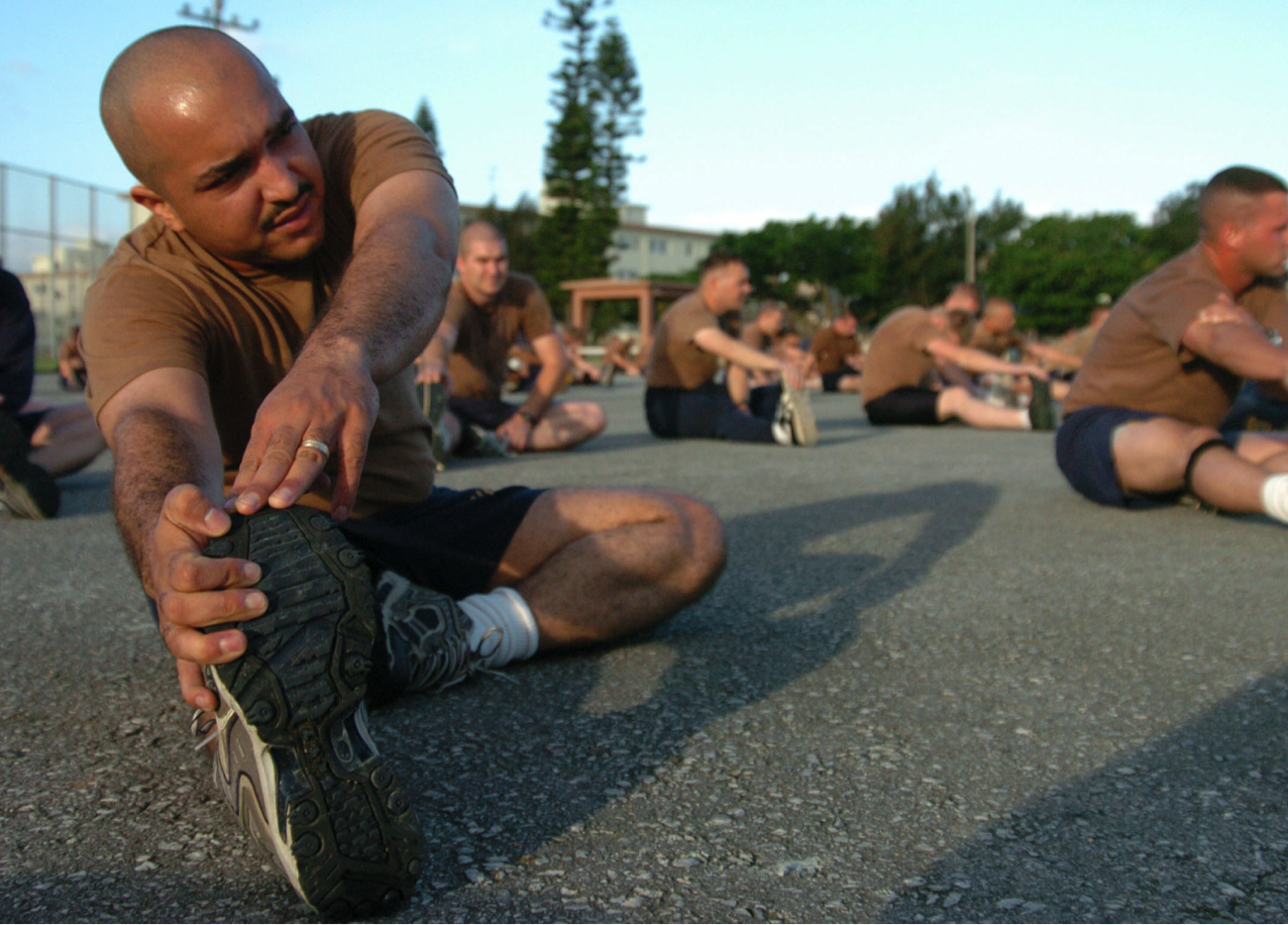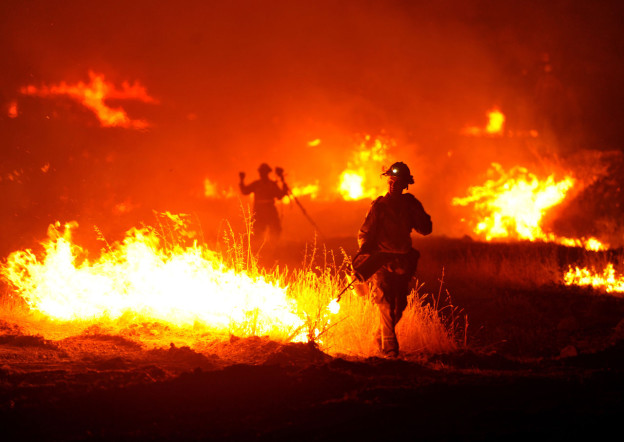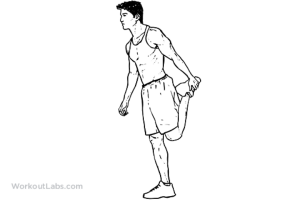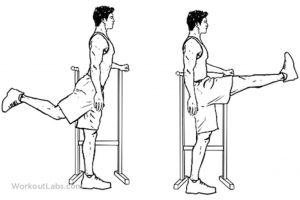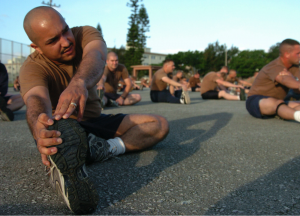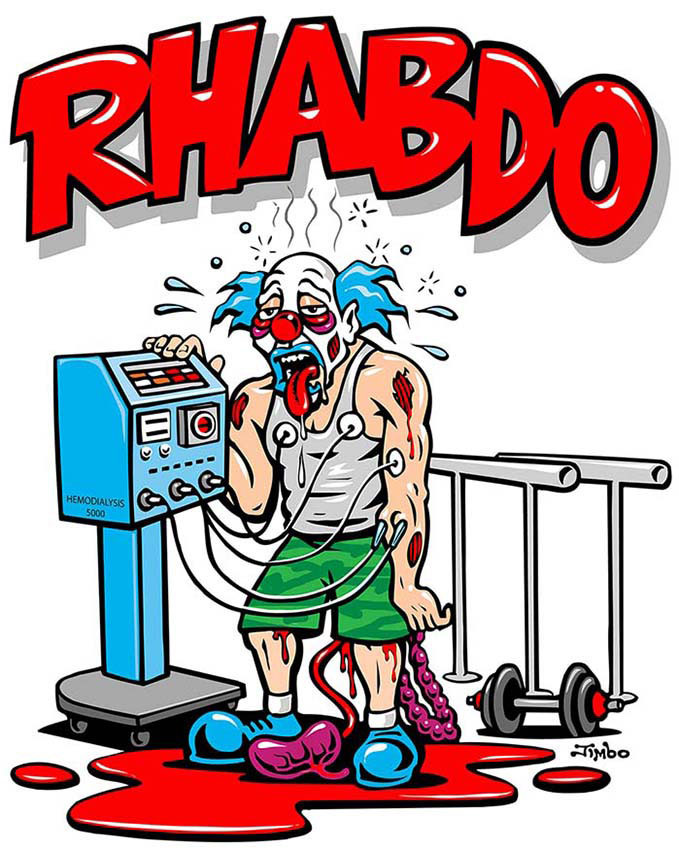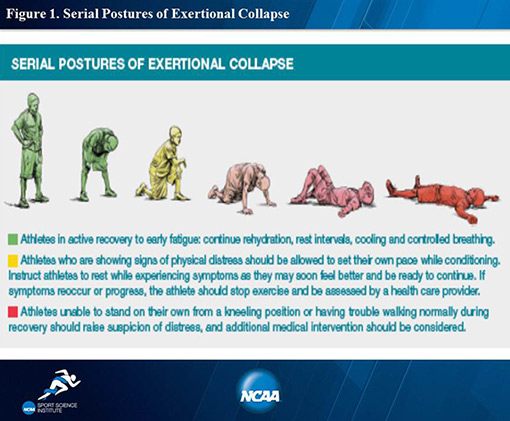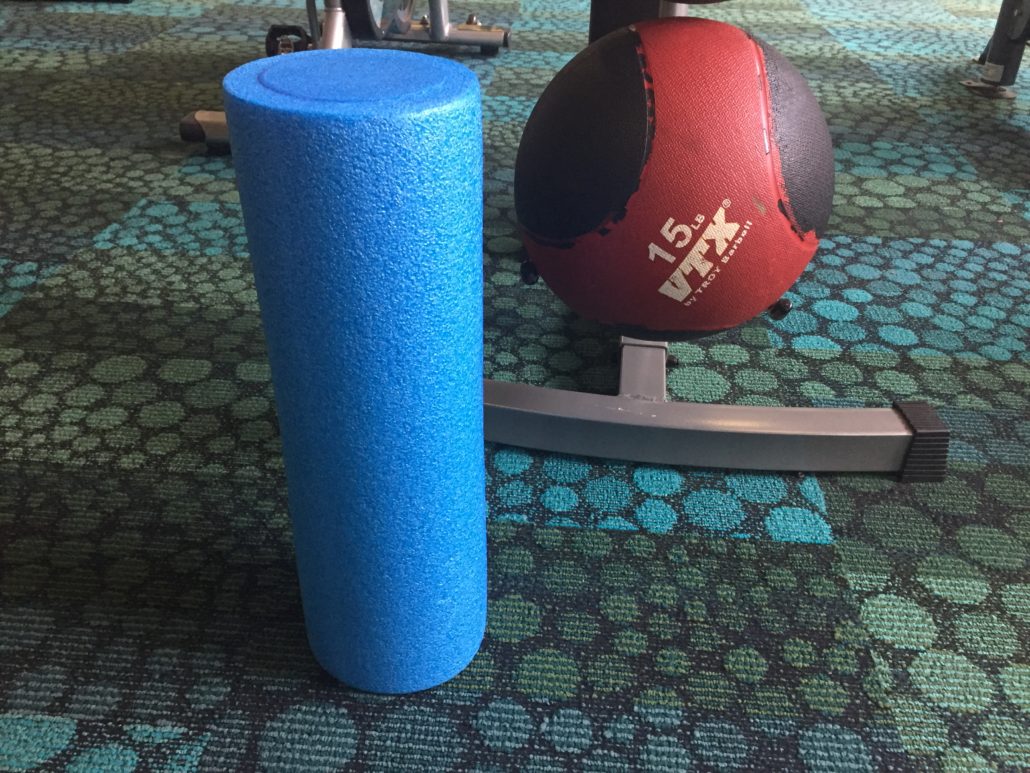BY: anthony harrell
Although it’s been quite a few years since I last laced up my shoes for a mid-season run with the Ukonom Hotshots, I’ll never forget the feeling of getting ready to run with the crew. Usually, it was already blistering hot, and while no one said as much, you knew everybody around wanted to hurry up and get this run over with before the morning got any hotter! Most of the time, we stood around, and each guy did his own unique stretching routine to limber up for the run. Routines they customized (or cannibalized depending on your view) from exercises they learned from football coaches or soccer camp instructors. But everyone just did what they had always done, not putting much thought into it. Actually, quite a few didn’t even bother to stretch – they thought running was the best way to loosen up your muscles! I remember putting my right leg over my left leg, and touching my toes, and thinking “Why am I doing this? Is this even helping? Shouldn’t there be a formalized stretching program? Maybe something supported by science?” Captains & squad bosses might be experts on fire, but they’re not always experts on fitness. After I left fire to pursue a PhD in Kinesiology, I would occasionally think about those mornings runs, and how to best prepare firefighters for it. Over the years, I have noticed that the topic of stretching, specifically when to do it, and how to integrate it into a workout program are all very common questions people ask me.
After many years of research, I finally feel qualified to offer an opinion on the matter! I drafted this article to describe both static and dynamic stretching, and offer some suggestions on how you can leverage each to get the most impact from your workouts.
Types of Stretching
When most of us think about stretching, we form a picture in our head of holding a joint or body part in a lengthened position to a point of slight discomfort. This is known as static stretching.
Common Static Stretches: Bending at the waist and touching your toes, pulling your arm across your chest and holding it in place with your other arm. For whatever reason, most static stretches are arbitrarily done for a count of ten seconds.
The definition of dynamic stretching on the other hand isn’t as straight-forward, but typically involves slow and/or exaggerated movements prior to beginning an activity.
Common Dynamic Stretches: High-kicks (see left), high-knees, lunge-walking, arm windmills.
Ok, So We’re Clear on Dynamic vs. Static, Right?
Great, Now Let’s Talk About Which to Use (and When)
Running and hiking are the two pillars of every wildland firefighting crews’s cardio program. Interested in learning how stretching impacts the performance of both these activities, I dug deep into the current research to see what effects stretching might have on reducing injury and improving performance.
When looking at static stretching, the research that has been compiled through the years isn’t very supportive! When done before physical activity, it actually has been shown to decrease performance, following a dose-response relationships (the longer the stretch, the worse they performed) (Behm et al, 2015)!
That really surprised me because almost EVERYONE does static stretching before they start a workout. Whether it’s a hotshot crew preparing for a hike, or a meathead getting ready to hit the squat rack at 24 Hour Fitness, you’re going to see a lot of static stretching. Turns out your mother was right – just because everyone else is doing it, doesn’t mean that you should!
So, that finding intrigued me, and I was curious to learn if dynamic warm up activities were equally worthless. In my research, I reviewed a study by Yamaguchi, Takizawa, and Shibata (2015) and found that performing a dynamic stretching routine improved running performance as measured by time to exhaustion and total running distance. This is good news for the firefighter whose crew makes running a go-to form of training while prepping for the season. Sadly, no good research is out there for its effectiveness on hiking performance! But the point is, dynamic stretching before running improves your performance. You can go harder for longer. Which is crucial.
So Dynamic Stretching Improves Performance – But What About Injury Prevention?
There is a common myth out there that if you don’t stretch before or after an activity that you put yourself at risk for injury. If you are thinking about getting crazy and heading in to your superintendent’s office and preaching that the crew needs time for stretching because of injury risk then you’d be wrong. The same researchers searched through over 100 published studies and found no evidence that stretching reduces injury rates (neither static nor dynamic). In fact, static stretches may actually reduce muscle activation which could further your risk of injury. For dynamic, there has been a lack of data collected to analyze whether or not it is effective. There are options to reduce this risk as much as possible, especially if you feel an ache or pain in your joints during stretches. These can be things like compressions sleeves. You can find the Top Elbow Compression Sleeve for Elbow Pain online on sites like Kunto Fitness, which are specifically made to prevent injuries and protect joints. However, if you are getting repeated injuries and think it is because you aren’t stretching enough before any activity then this isn’t the case. Rather than stretching and stretching, it makes more sense to find somewhere that offers physical therapy palo alto ca and speak to one of the therapists about your injuries.
How to Integrate it Into Your Training
 First off, let’s be clear that just because research does not fully support something does not mean that it has lost its usefulness. I know firsthand that what works in the field, the gym, or out on the line, may not always have the best evidence for why we use it. If you or your crew are using one of the methods of stretching talked about today and it works, then stick with it!
First off, let’s be clear that just because research does not fully support something does not mean that it has lost its usefulness. I know firsthand that what works in the field, the gym, or out on the line, may not always have the best evidence for why we use it. If you or your crew are using one of the methods of stretching talked about today and it works, then stick with it!
If you are unsure or trying to shake things up a bit, my recommendation would be to try both! Give static stretching a shot before or after a hike and/or run and see how you feel. Do the same with a dynamic warm-up program. Personally, I would recommend mixing up some static stretches with a dynamic warm-up program. (Fortunately, Hotshot Fitness has you covered! Check out our warm-up routine here).. You get the added benefit of increasing the motion of tight joints while getting your system revved up and focused to kick some ass!
Finally, experiment with whether or not you need to do it before or after PT as the evidence for this is lacking so you can’t go wrong. Also, keep in mind that your line of work is not a 9-5 job, so you need to be prepared at all hours, not just before a hike. Due to the intensity of the job, I highly recommend stretching and light movements in the barracks or at home. These are easy things you can do while chatting with family on the phone or grilling dinner on the BBQ. The big thing to remember, is just do it! Our bodies are made to move and you know yours the best. Take care of it, it is what helps you pay the bills.
Summary
- Stretching has not been proven to reduce injuries
- Static stretching may decrease performance
- Dynamic stretching/warm-ups have been shown to improve performance in endurance-activities such as running
- Experiment with both!
STAY TUNED!
In an article coming very soon, I will put together some pictures of stretches and warm-up activities that you can use to prepare yourself for training.
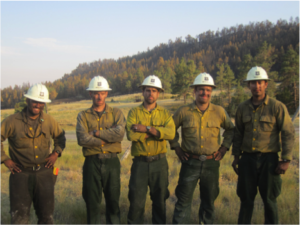
ABOUT THE AUTHOR:
Anthony Harrell spent three years with the Ukonom Hotshots. His adventures in fire inspired him to pursue a career in Physical Therapy, and he recently graduated from the Doctor of Physical Therapy program at the University of California, San Francisco (UCSF) / San Francisco State University.
He lives in the San Francisco Bay Area. He has been a contributor to Hotshot Fitness since 2016.
Interested in writing for us? Check out our contributor guidelines for more information.
As many crews begin their season ramp up with critical refresher training, and PT tests, it’s worth taking “Six Minutes for Safety” to learn more about this nasty thing called Rhabdomyolysis, or “Rhabdo” for short.
Last year we saw a disturbing spike in firefighters suffering over-exertion injuries. Specifically, over a two-month period in 2016, we saw seven reported cases of Rhabdo during PT tests, Pack tests, and crew PT. More troubling, four of those cases occurred over a four day period. Four cases were reported in May, and three were reported in June.
[column]Who was Impacted?
- Five Handcrew members
- Three type 1 crew members
- Two type 2 crew members
- One helitack crew member
- One engine crew member
[/column]
[column]Where Did the Incidents Occur?
- California (2)
- Oregon
- Idaho
- Nevada
- South Dakota
- Wyoming[/column]
Takeaway: Rhabdo is not limited to one specific group of firefighters (all are at risk). Additionally, geography matters little. The cases were spread across the west about as evenly as possible.
What the heck Is “Rhabdo”?
Rhabdo occurs when skeletal muscle tissues are degraded to the point of disintegration, and begin to leech into your bloodstream. As your damaged muscle tissues breakdown, one of the by-products is a protein called myoglobin. As you’ll no doubt remember from your high school biology class, the kidney is working 24/7 to filter your blood. All the gunk it filters out is turned into urine. Which is why you pee. In a twenty-hour period, the average kidneys will filter around 120-150 quarts of blood and produce one to two quarts of urine. Well, as your muscle tissue is breaking down, and these myoglobins are entering your blood stream, you have a problem. Myoglobin is like Kryptonite to a kidney. The protein can cause some serious damage to the kidney, often times irreversible damage.
Here’s what makes Rhabdo so nasty – you literally piss away your muscle tissue. it’s disgusting. And the long-term effects can be extremely serious, ranging from kidney failure and partial paralysis, and sadly, even death.
Rhabdo is a serious threat to the health and safety of all wildland firefighters, and the most dangerous time is NOW – at the beginning of the season.
What Causes It?
WebMd has a great run-down of the various causes of Rhabdo, but the most likely causes of Rhabdo in wildland firefighters are:
- [highlight]Extreme muscle strain, especially in someone who is an untrained athlete; this can happen in elite athletes, too, and it can be more dangerous if there is more muscle mass to break down. Some use cbd cream to help soothe this, but even so people should try to avoid hurting themselves like this.[/highlight]
- [highlight]A very high body temperature (hyperthermia) or heat stroke[/highlight]
So, participating in a grueling PT or training in hot environments without proper pre-training exposure. Heat stroke can be a major factor for season firefighters arriving from out-of-state, who have not allotted enough time to acclimate to their new environment. Think a new crew member from Montana who arrived the night before his first day on a crew in Arizona.
How to identify Rhabdo Symptoms
While Rhabdo’s symptoms can be unique and varied, the “classic triad” of symptoms are, according to WebMD, the following:
- Muscle Pain in shoulders, thighs, or back
- Muscle weakness and difficulty moving limbs
- Tea-colored urine
Here are some additional symptoms that may be present:
- Abdominal pain
- Nausea or vomiting
- Fever, rapid heart rate
- Confusion, dehydration, fever, or lack of consciousness
How Is Rhabdo Treated?
First off, the person needs to be hospitalized. This isn’t one of those things where you walk the firefighter over to some shade, sit him down, and give him a gatorade and some Advil and tell him to relax. The person’s organs are beginning to shut down and without timely medical intervention, the firefighter is at serious risk. Once at the hospital, the firefighter will be given IVs of fluid to help maintain regular production of urine and prevent the kidneys from failing. And, depending on severity the case, treatment might occur in the ICU, and / or may even require surgery. The good news is that if caught early, and treated appropriately, full-recovery is quite likely.
How to Prevent / Avoid It?
- The NCAA provides a simple mantra: Avoid Too Much, Too Soon, Too Fast
- Mental Stress has an impact. Anxiety has been linked to the onset of Rhabdo symptoms. As anyone who’s ever been the new guy on a crew can attest to, the first day, and the ensuing weeks, can be stressful. Combining physical with mental stress can exacerbate both, and lead to a heightened risk of Rhabdo. Beware of the mindset that your rookies are coming in with. They may want to look at trying some different ways of relaxing themselves mentally to help curb stress. Medical marijuana has previously been used to calm racing minds down, however, the law is different in each state for taking this type of alternative remedy and must be researched first, for example, missouri marijuana laws may be different to Californian marijuana laws. Depending on if cannabis is available for recreational or medical use will affect the availability of the product. If you live in an area that only allows medical use, reading up on qualifying conditions (https://ohdispensaries.com/ohio-marijuana-qualifying-conditions/) will help you get the assistance you require.
- Maintain proper hydration
- Provide recovery opportunities. If firefighters are woozy, wobbly, taking knees, and struggling, it might be worth a break. If firefighters are flopping on to their backs, and struggling to hold themselves upright, or in a kneeling position look out. That’s a problem. The NCAA provides a great chart showing the spectrum of recovery.
How to Help Your Fellow Crew Members
- Awareness. Familiarize yourself with the symptoms of Rhabdo. Have an action plan in place if someone begins to show symptoms. Better to have a false positive than a false negative. Keep these two printouts handy in the event that you need to take a crew member to seek medical treatment.
- Call it out. We call out snags, rocks, and tripping hazards because they pose a danger to the individual firefighter AND to the crew. Same thing with medical issues. Like so many illnesses, it’s difficult for a person afflicted by Rhabdo to self-diagnose. That’s why it’s critical for crew members to be vigilant in monitoring each other’s performance. If something is off – say something
Conclusion:
Regardless of whether you’re training in Wyoming or SoCal, Rhabdo is a serious danger faced by firefighters. And it should not be written off as something that only impacts the old firedogs, or those who show up for duty in poor shape. In fact, in January 2011, a ridiculously intense pre-season workout landed 13 University of Iowa football players in the hospital, one for Rhabdo. And earlier this year, in January, a member of the University of Oregon football team was hospitalized with Rhabdo following an off-season workout. Let’s be honest – college football player are in better shape than 99% of wildland firefighters. And they’re just as susceptible to Rhabdo.
Be safe out there, and take care of one another.
Additional Resources:
Wildland Fire Lessons Learned – Rhabdo Resources
Wildland Fire Lessons Learned – Podcast (Discussion on Rhabdo starts around the 5 minute mark)
New Year, New Mindset
With the New Year now upon us, most are starting to think about ways to scrape off the rust from these last few non-fire months. Whether you are new to fire or looking for ways to sharpen your athleticism, now is the perfect time to get moving. Make this season a safe and effective one by developing both the mental and physical fortitude needed for the job.
Firefighters as Tactical Athletes
Wildland firefighting has historically been a seasonal occupation, with young adrenaline-seeking men and women eager to make a year’s worth of wages to help get through the winter months to pursue other jobs, schooling, and adventures. I have even read stories in the first half of the 20th century which tell tales of local rangers recruiting young drunken men from barstools to put in a few chains of line and help extinguish a blaze. Fast-forward to the present time and you would be hard-pressed to find the firefighter who isn’t regularly maintaining some level of physical fitness and aptitude, even in the off season. Thankfully, there are many top tips online to help keep those looking to attain a better level of physical fitness do so. Check some out here – http://www.st-ambrose.com/2020/11/02/top-rated-tips-for-fitness-success/.
Our knowledge of fire and human performance has vastly improved and it is crucial that we treat the profession with the respect that it deserves. Between 2003 and 2007 alone, there were approximately 1,300 fireline injuries reported (Department of Interior, 2015). Using fire reporting software could help keep track of fire department records like this. Even more staggering to see is the 440 men and women who have been killed in the line of duty since 1990 (NIFC, 2015). It is not appropriate nor respectful of those injured or killed throughout the history of the profession to show up to your crew out of shape and unprepared. There is ever-developing science and techniques at our disposal, but it depends on your mindset.
Wildland firefighters (seasonal and permanent) work a hard, dangerous, and oft-badass job which requires technical skill, a sharpened mind, and physical prowess. The Tactical Athlete has been described as one whose occupations requires “Personnel to develop general physical preparedness in addition to technical and tactical skills that are crucial in environments involving civil protection, grave physical danger, or rescue situations” (Scofield and Kardoni, 2015). There has never been a better time than now to start preparing to be mountain tough and fire ready.
Fitness: mental and physical
Here at Hotshot Fitness, we are motivated to help you fulfill your firefighting goals. It doesn’t matter if you are a salty veteran or a green rookie; we all have the capacity to improve. If you look up fitness in a dictionary, you will see it defined as “the quality of being suitable to fulfill a particular role or task”. The wildland firefighting environment requires firefighters to bring mental toughness and physical strength to work, every shift, every roll. Your success at being able to satisfy those demands determines your fitness. And that is 100% in your power to control.
You have the good-fortune of being in the middle of the off-season which means time for self-exploration. What are some of your goals for the upcoming year? Is it to pull your weight on a hotshot crew? How about exhibiting the physical strength and stamina to prove you belong on a saw team? It may even be that you are new to this world and are looking to simply pass the Pack Test and start your career in fire. The point is, there is no goal too small. You can pour over the articles on this site and find physical tips to get your ass in gear, however, it comes down to the action that you take.
Extreme Ownership is a term coined by and title of a book by retired Navy SEALs Jocko Willink and Leif Babin. I believe this book should be read anyone looking not only to lead others, but those wanting to take control of their own life. In it, the authors discuss how one must own everything about their decisions and actions and take responsibility for the outcome. As you kick your off-season training into high gear, we highly recommend that you adopt an “Extreme Ownership” mindset. Jocko also has an amazing podcast that we highly recommend checking out. He has also been featured on the Tim Ferriss podcast, and some of his advice made its way into Tim’s latest book, Tools of Titans (another HF highly-recommended read).
Your Off-Season To Do List:
- Read Extreme Ownership by Jocko Willink and Leif Babin
- Be Inspired
- Analyze your strengths and weaknesses.
- Set a goal (or goals)
- Prioritize and formulate a plan
- Execute. Execute. Execute
Use this new mindset to guide your choices, your training, and your performance as a tactical athlete in 2017.
Remember: Be S.M.A.R.T. With Goals. For some advice on goal-setting, check out some of our tips.

About the Author:
Anthony Harrell spent three years with the Ukonom Hotshots. His adventures in fire inspired him to pursue a career in Physical Therapy, and he recently graduated from the Doctor of Physical Therapy program at the University of California, San Francisco (UCSF) / San Francisco State University.
He lives in the San Francisco Bay Area. He has been a contributor to Hotshot Fitness since 2016.
Interested in writing for us? Check out our contributor guidelines for more information.
I’ll be honest – a foam roller saved my life. Not literally of course, but it did make a huge impact. Back when I interviewed Carrie Lucero of Road Runner Sports, we were talking about everything running related, and she asked me about foam rollers. I told her that I had never heard of a foam roller. She looked at me quizzically. Here we were, half-way through an interview, and suddenly she must have been thinking “This guy runs a fitness website and has no idea WTF a foam roller is?”
It was pretty embarrassing. But we continued with the interview, and I promised to buy a foam roller. She told me it would help reduce the IT Band issues that I was having. And after just a week, my IT Band issues were gone. And I have been a fan of foam rollers ever since.
How do they work?
Think of it as a self-induced massage. Rather than having a masseuse deliver targeted pressure to your muscles, you’re inverting the situation. You’re balancing your body weight on a small area (the foam roller), and that provides the necessary pressure. As contributor Anthony Harrell explained in his article, “Got Back Pain?“, when you’re using a foam roller, you’re performing a “self-myofascial release technique” (sounds pretty naughty – but we verified its SFW status). Over time and with excessive exertion, soft tissue (like muscles) become short, tight and sore. Massaging the tissue helps to lengthen and relax the muscles, which will help with recovery AND performance. All good things. But the most important thing is – it just feels good. The feeling is very comparable to hopping into the shower when you have poison oak. Scalding hot water on poison oak produces this bizarre feeling of both pain and pleasure.
The foam roller is a bit like that, but definitely dialed down a couple notches.
When Should I Use Them?
Before and/or after a workout. My IT Band would act like a dog that knew it was going to the vet. It would be fine throughout the day, but the second the running shoes came out – BAM – sudden pain. It was the weirdest thing. But spending five minutes on the foam roller, targeting the sides of both of my knees, as well as my hamstrings, really made a difference.
Youtube has a slew of videos that you can check out to target specific areas. For me, I have had the most success using it on my legs to target sore quads, hamstrings, and my IT band. I have found it to be less successful at alleviating tension in my lower back, but that might be an issue of form rather than an indictment of the roller’s effectiveness.
All that being said, the foam roller is a relatively inexpensive addition to your arsenal of recovery products, and if you’re regularly following our programs, you’re going to need one!
Buying Options:
Amazon has got you covered. Check out some of these options.
[highlight]For more advice on injury prevention and recovery, check out the “Hotshot Fitness Rehab Kit” for our recommendations on products that will keep you #FireReady.[/highlight]
